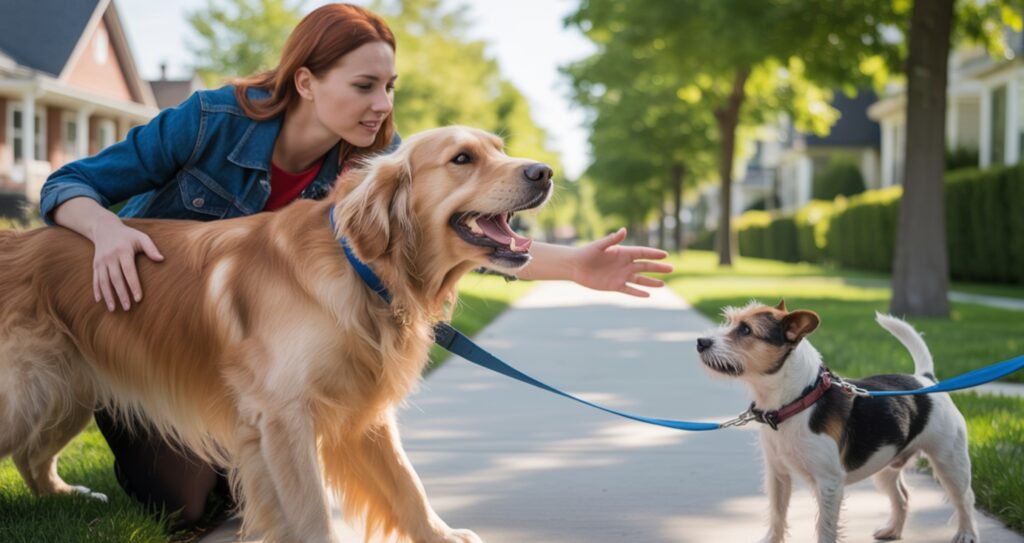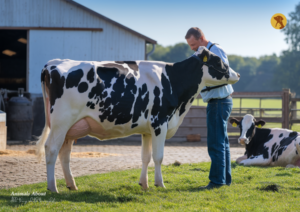For many dog owners, taking a walk with their furry friend is one of the highlights of the day. It’s not just exercise, it’s bonding time, mental stimulation, and a chance for your dog to explore the world. But when your dog barking on walks, it can turn a peaceful outing into a stressful and embarrassing ordeal.
You might be wondering: Why is my dog barking while walking? Whether they’re barking at other dogs, strangers, cars, or seemingly nothing at all, there’s always a reason behind the behavior. In this post, we’ll explore the common causes of dog barking on walks, explain the science behind canine communication, and share proven strategies to help calm your dog down.
Why Does Dog Barking on Walks Happen?
Barking Is a Form of Communication
Barking is how dogs talk. Whether it’s excitement, frustration, fear, or a warning, your dog is trying to say something. Understanding reactive dog behavior and the root cause of barking is the first step toward managing it.
Common Reasons for Barking at Other Dog Barking on Walks
Let’s look at the most common behavioral causes:
1. Leash Reactivity
Leash reactivity is one of the most common reasons dogs bark on walks. When leashed, a dog might feel trapped and more likely to bark at triggers like other dogs or strangers. Without the ability to move freely, your dog may resort to vocalizing their discomfort.
Symptoms of leash reactivity include:
- Lunging at other dogs
- Barking aggressively
- Growling or snapping
This type of behavior doesn’t necessarily mean your dog is aggressive. It’s often based on frustration, over-excitement, or fear.
2. Fear-Based Barking
If your dog starts barking every time someone new walks by or when loud sounds occur, it might be due to dog anxiety during walks. This fear-based barking usually stems from:
- Lack of early socialization in dogs
- Past trauma or negative experiences
- Genetic predisposition
Dogs with fear issues are not being “bad” they’re simply scared and unsure of how to react.
3. Territorial Aggression
Dogs are naturally protective. On walks, some dogs see certain areas as “their territory,” especially when near their home. Territorial aggression leads to barking at people, dogs, or even cars passing by.
This instinct is stronger in certain breeds but can occur in any dog without proper training.
4. Excitement and Lack of Training
Your dog may simply be barking while walking out of sheer joy or frustration. If they haven’t been taught how to behave on walks, they may bark to express excitement when seeing another dog or a squirrel or just to get your attention.
Recognizing Behavioral Triggers in Dog Barking on Walks
Before you can fix the barking, you need to identify what’s causing it. Observe your dog’s behavior and ask:
- When does the barking start?
- What is your dog looking at when they bark?
- Are they barking more in certain locations or times of day?
Common behavioral triggers include:
- Other dogs
- Joggers or cyclists
- Loud vehicles
- Children playing
- Unfamiliar objects (e.g., trash bins, statues)
Keep a log of your walks to identify patterns. This can be extremely helpful when working on a dog barking solution.
How to Stop Dog Barking on Walks
Once you understand why your dog barks on walks, you can use targeted training to help manage the behavior.
✅ 1. Use Positive Reinforcement Training to Reduce Dog Barking on Walks
Never punish your dog for barking. Instead, use dog training tips grounded in positive reinforcement:
- Carry high-value treats (chicken, cheese, etc.)
- When your dog sees a trigger and doesn’t bark, reward them immediately
- Repeat this consistently until they learn quiet behavior reward
Tip: Use the “Look at Me” command to redirect their attention when they start to focus on a trigger.
✅ 2. Practice Desensitization and Counterconditioning for Barking During Walks
These techniques help dogs build neutral or positive associations with their triggers:
Desensitization: Gradually expose your dog to the trigger at a distance where they don’t react. Slowly decrease the distance over time.
Counter-conditioning: Pair the presence of a trigger with something your dog loves (like a treat). Over time, your dog will associate the trigger with something good rather than a threat.
✅ 3. Create Distance from Barking Triggers on Walks
Sometimes, simply walking your dog further away from the trigger can prevent barking. Cross the street, change direction, or put yourself between your dog and the trigger.
This reduces pressure and gives your dog more space to calm down.
✅ 4. Use Calming Techniques for Dogs
If your dog is frequently anxious, try:
- A calming vest (like a Thundershirt)
- Calming treats or chews
- Essential oils designed for dogs
- A gentle tone of voice and soft petting
Combining these calming techniques for dogs with behavior training can have a powerful impact.
✅ 5. Improve Socialization to Prevent Excessive Barking on Walks
Early and continued socialization in dogs helps prevent reactivity and fear. If your dog didn’t have much exposure to other dogs or people as a puppy, they might struggle now.
Help them gradually meet new people, experience different places, and interact with calm, well-mannered dogs.
Tools That Can Help
If you’re struggling, a few tools can support your training efforts:
- No-pull harnesses: Offer better control without choking your dog
- Head halters: Help redirect your dog’s focus gently
- Clickers: Useful for training and rewarding quiet behavior
- Treat pouches: Keep rewards accessible during walks
These tools don’t fix behavior on their own but can support proper training methods.
When to Consult a Professional
If your dog’s barking is aggressive, unmanageable, or getting worse, it’s a smart move to seek help. A certified dog trainer or behaviorist can:
- Evaluate your dog’s temperament
- Design a personalized behavior plan
- Help you implement safe, positive solutions
Especially in cases of aggressive dog on leash issues, professional help can make a big difference.
Preventing Future Problems Dog Barking on Walks
The best way to deal with dog behavior on leash is to prevent bad habits from forming. Here’s how:
- Start leash training early
- Keep walk environments positive
- Reward calm behavior consistently
- Don’t reinforce barking by giving attention to it
Also, make sure your dog’s daily needs are met. A tired, mentally stimulated dog is far less likely to act out. Provide:
- Regular exercise
- Puzzle toys and games
- Social time with other dogs or people
- Enrichment walks (sniffing is mentally satisfying!)
End
Dog barking on walks is a common issue but it doesn’t have to be permanent. Whether it’s leash reactivity, fear-based barking, or territorial aggression, understanding the root cause is key.
Use positive training, understand your dog’s triggers, and work at their pace. With time, patience, and the right techniques, you’ll turn those stressful, noisy walks into peaceful, joyful outings you both look forward to.
Every bark tells a story. It’s your job to listen, learn, and guide your dog toward better behavior.







